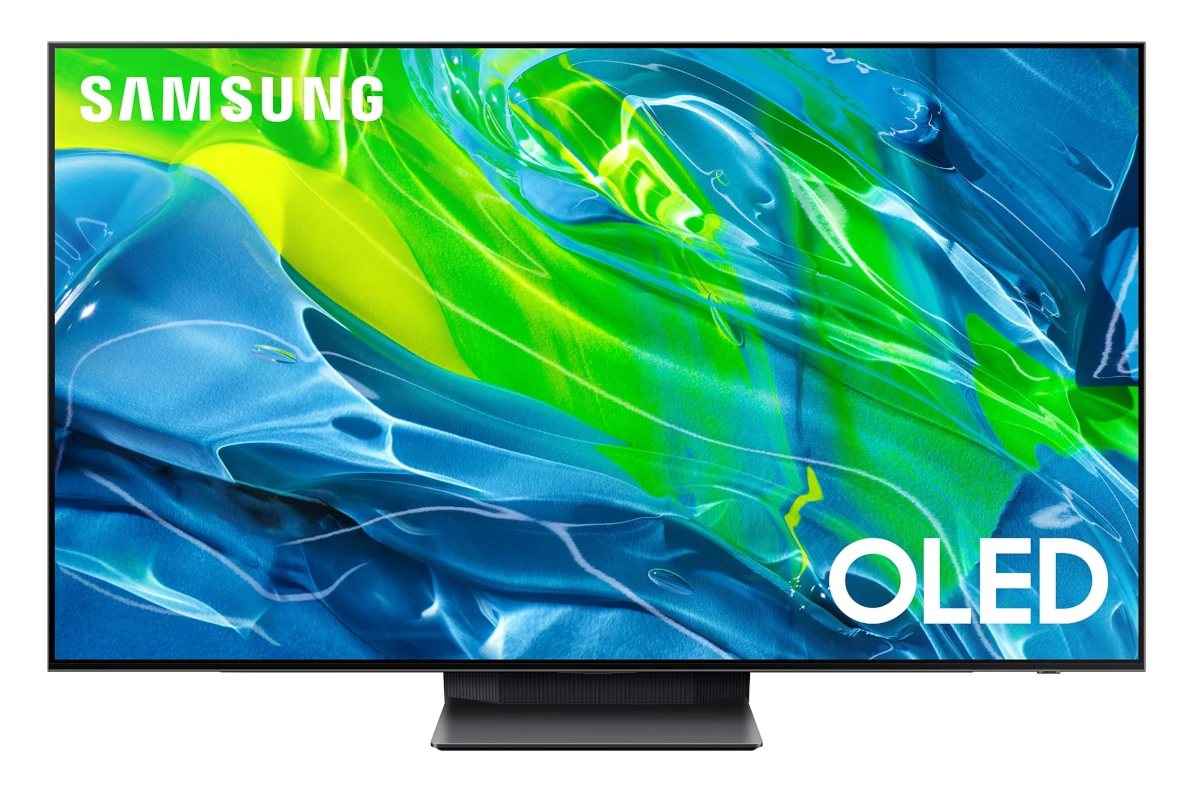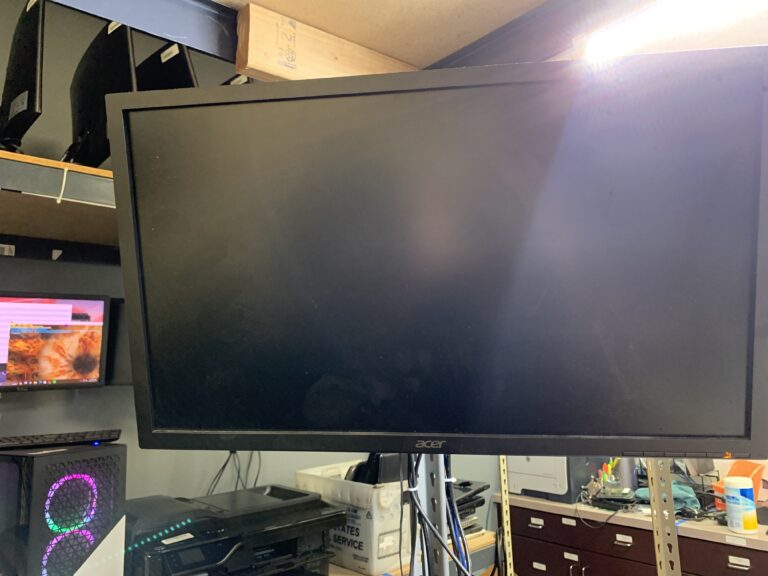Samsung has introduced new display technologies that combine OLED and LCD advancements. One of their innovations is the OLED Glare Free technology, which ensures clear images and vibrant colors even in bright light by using a special coating to reduce reflections without compromising image quality.
Samsung’s new OLED displays will also feature the Flex Hybrid OLED mobile screen, allowing the screen to both fold and slide, offering a flexible size and aspect ratio. By emphasizing the capabilities of both OLED and LCD technologies, Samsung is at the forefront of display innovation, focusing on enhancing image quality and versatility for various applications.
Samsung Displays: OLED vs. LCD Technology
Samsung is a leading manufacturer of display panels, producing both OLED and LCD screens used in smartphones, TVs, monitors, and other devices. Understanding the differences between OLED and LCD technologies can help you choose the right display for your needs.
1. What is OLED?
- OLED stands for Organic Light Emitting Diode.
- Each pixel emits its own light using organic compounds.
- Samsung’s OLED panels include AMOLED (Active Matrix OLED), widely used in smartphones like the Galaxy series.
Key Features:
- True blacks: Pixels can turn off completely, resulting in deep blacks and high contrast.
- Better contrast ratio: Because of self-emissive pixels.
- Faster response time: Ideal for gaming and fast-moving content.
- Wide viewing angles: Colors and brightness remain consistent from different angles.
- Thinner and flexible: OLED panels can be made thinner and even flexible, enabling curved or foldable displays.
2. What is LCD?
- LCD stands for Liquid Crystal Display.
- Uses a backlight (usually LED) to illuminate pixels, which block or allow light to create images.
- Samsung’s LCD panels include LED-backlit LCDs and derivatives like Quantum Dot LCDs (QLED).
Key Features:
- Brighter peak brightness: LCDs can often achieve higher maximum brightness, useful in very bright environments.
- Generally lower cost: Manufacturing LCDs tends to be less expensive.
- No burn-in risk: Unlike OLEDs, LCDs don’t suffer from image retention or burn-in.
- Color accuracy: Quantum Dot LCDs have improved color reproduction and efficiency.
3. Samsung’s Focus
- Samsung Display has shifted its focus primarily to OLED panels since June 2022, ending LCD panel manufacturing.
- OLED technology dominates Samsung’s premium smartphone and TV displays.
- Samsung’s QLED TVs use Quantum Dot LCD technology, combining LCD backlighting with quantum dots for enhanced color and brightness.
4. Pros and Cons Summary
| Feature | OLED (Samsung AMOLED) | LCD (Samsung LED/QLED) |
|---|---|---|
| Black Levels | Perfect blacks (pixels off) | Blacks are grayish due to backlight |
| Contrast Ratio | Very high | Lower than OLED |
| Brightness | Good, but lower peak brightness | Higher peak brightness |
| Viewing Angles | Wide and consistent | Can suffer from color/brightness shifts |
| Response Time | Very fast | Slower than OLED |
| Burn-in Risk | Possible with static images | No burn-in risk |
| Thickness & Flexibility | Thin and flexible | Thicker, rigid panels |
| Cost | Generally higher cost | Generally lower cost |
5. Which Should You Choose?
- Choose OLED if: You want deeper blacks, better contrast, faster response times, and a thinner, more flexible display—ideal for smartphones and high-end TVs.
- Choose LCD if: You prioritize higher brightness, lower cost, and no risk of burn-in—commonly used in budget devices and some TVs.
Additional Resources
- Samsung Display – Wikipedia
- OLED – Wikipedia
- Comparison of CRT, LCD, plasma, and OLED displays – Wikipedia
Display Diversity: Samsung’s Dual Technology Strategy
OLED: The Premium Choice
Samsung’s OLED displays are renowned for their vibrant colors, deep blacks, and high contrast ratios. They utilize self-emitting pixels, eliminating the need for a backlight, resulting in thinner and lighter panels. OLED technology excels in delivering a premium visual experience, making it ideal for high-end smartphones, tablets, and TVs.
LCD: The Versatile Workhorse
While OLED takes the spotlight for premium devices, LCD (Liquid Crystal Display) remains a versatile and cost-effective technology. Samsung’s LCD displays offer excellent brightness, wide viewing angles, and energy efficiency. They are commonly used in a variety of devices, including budget-friendly smartphones, monitors, and TVs.
Quantum Dot (QLED): Enhancing LCD Performance
Samsung has further enhanced its LCD technology with Quantum Dot (QLED) technology. By adding a layer of quantum dots, these displays achieve a wider color gamut and improved brightness, bridging the gap between LCD and OLED in terms of visual quality.
Mini-LED: The Next Generation of LCD
Samsung’s Mini-LED displays represent the next evolution of LCD technology. These displays utilize thousands of tiny LEDs for backlighting, offering precise local dimming zones for enhanced contrast and HDR performance. Mini-LED displays deliver a superior visual experience compared to traditional LCDs while remaining more affordable than OLED.
Table: Samsung Display Technologies
| Technology | Advantages | Disadvantages | Applications |
|---|---|---|---|
| OLED | Vibrant colors, deep blacks, high contrast, thin and light | Potentially shorter lifespan, risk of burn-in, higher cost | High-end smartphones, tablets, TVs |
| LCD | Excellent brightness, wide viewing angles, energy efficient, affordable | Lower contrast than OLED, less vibrant colors | Budget-friendly smartphones, monitors, TVs |
| QLED | Wider color gamut, improved brightness, enhanced LCD performance | Still not as good as OLED in terms of blacks and contrast | Mid-range to high-end TVs and monitors |
| Mini-LED | Precise local dimming, enhanced contrast and HDR, improved LCD technology | More expensive than traditional LCD, not as thin as OLED | High-end TVs and monitors |
Key Takeaways
- Samsung’s OLED Glare Free tech improves visibility in bright light.
- Flex Hybrid OLED screens offer dual fold-and-slide functionality.
- Samsung leads in both OLED and LCD display innovations.
Innovations in Samsung Display Technology
Samsung Display has developed several cutting-edge technologies that improve entertainment and productivity. This includes combining OLED and LCD tech and creating new forms like foldable and slidable screens.
Emerging Hybrid Display Concepts
Samsung Display has introduced hybrid screens like the Flex Hybrid. This screen can both fold and slide out. It starts as a small display but can transform into a larger one, changing its aspect ratio.
Another concept is the Flex In & Out, which offers even greater flexibility. These new forms promise better durability and have undergone rigorous durability tests. They aim to change how users interact with their devices, from smartphones to tablets.
Advancements in OLED and LCD Integrations
Samsung has pushed boundaries with OLED and LCD integrations. The QD-OLED introduces Quantum Dot technology to OLED screens, creating vivid and accurate colors. The HyperEfficient EL helps enhance brightness and efficiency in displays.
RGB OLEDOS technology integrates OLED with a fingerprint biosensor-embedded panel and an organic photodiode (OPD). This makes screens more interactive and secure. Integrating OLED into TVs, tablets, monitors, and laptops offers high-quality visuals and better user experience.
Market Impact and Product Development
Samsung’s innovation impacts the market by setting new standards in display technology. The transparent MICRO LED and Sensor OLED Display cater to new niches. Foldable phone concepts like the Slidable Flex Solo and Flex Note could reshape the smartphone market.
These advances help Samsung maintain its leadership. New products undergo extensive development to meet diverse needs. Samsung’s display technology not only enhances entertainment but also improves productivity, making screens central to everyday life.
Frequently Asked Questions
Samsung’s display technology now merges OLED and LCD advancements, bringing changes to visual clarity and energy efficiency.
What features does the new Samsung technology offer that combines OLED and LCD?
The new Samsung displays use high-definition OLED for better color and contrast. They also include durable LCD layers. This combination helps provide clearer images and better picture quality.
How does the newest Samsung display technology improve upon previous models?
Samsung’s latest displays use more advanced pixels and improved energy-saving methods. This means the screens are brighter and use less power. The integration helps reduce glare while maintaining image clarity.
What are the benefits of Samsung’s dual OLED and LCD screens?
Combining OLED and LCD allows for rich colors and deep blacks from OLED, along with the reliability of LCD. This makes the displays more versatile and suitable for different lighting conditions.
Can consumers expect to see the new Samsung display technology in upcoming monitor lines?
Yes, Samsung plans to include this tech in its new monitor lines. This will likely show up in various sizes for both home and professional use.
What implications does the integration of OLED and LCD have for Samsung’s future products?
This integration shows Samsung’s commitment to innovation. Future products may feature even more advanced screens, improving user experience in various devices such as TVs, phones, and virtual reality equipment.
How will Samsung’s new display technology impact the market in terms of pricing and availability?
The new technology may raise the cost of some products due to higher production expenses. However, it also promises better performance and longevity, which may attract more buyers. Availability could increase as production scales up.







